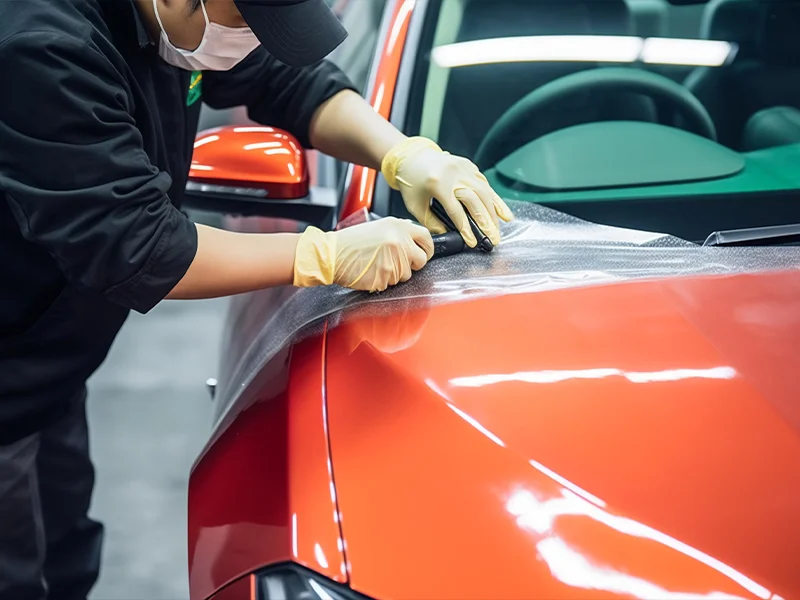Selection and usage steps of window film
Release time:
May 17,2024
Author:
Source:
The following types of window films can be provided. According to the needs of your family, you can choose the window film that best meets these needs:

How to choose window film and how to use it
The following types of window films can be provided. According to the needs of your family, you can choose the window film that best meets these needs:
Insulation film adds comfort to your home throughout the year. They can reflect the heat of summer sunlight, which helps reduce the overall increase in heat in the home. Therefore, you will feel cool indoors, reducing reliance on air conditioning, reducing its use, and thus saving energy. Insulation boards can also maintain up to 55% of household heat in winter. This type of window film not only saves you water and electricity costs, but also ensures comfort in your home. In addition, insulation film can also reduce fading and damage to home furniture and floors by blocking up to 99% of ultraviolet radiation. Insulation film is a cost-effective and energy-saving improvement measure that is suitable for all existing residential windows, including double pane glass, and can be self paid in less than a few years. They can improve home comfort and reduce living costs by absorbing heat.
Anti glare or static window film helps reduce glare and provides detachable and reusable flexibility. These window films can prevent reflection from TV and computer screens and improve the appearance of your home. Anti glare/static window film can also block 99% of ultraviolet rays. The interior of single pane glass and the exterior of double pane glass should use anti glare window film.
Anti privacy window film helps to protect privacy and block 99% of ultraviolet rays. The frosted window film is semi transparent, allowing light to pass through while providing 24-hour privacy. Unidirectional perspective film protects privacy during the day. This type of film is fine when viewed from the inside out, but during the day, it's difficult to see inside from the outside. The black ESD window film also provides daytime privacy and reduces the amount of light entering the room.
Here are some key terms that can help you choose and compare window films.
Solar blocking rate - measures the ability of window films to retain infrared heat, ultraviolet light, and visible light in living areas. The higher the number, the more comfortable you should be.
Visible light transmittance - measures the brightness or darkness of a window film. The lower the number, the darker the window film. A window film with a transmittance of 49% provides an excellent balance between reducing glare and visibility.
Visible light reflectance - measures the percentage of visible light reflected by a window film. The higher the number, the brighter the appearance.
UV blocking rate - measures how much UV light is blocked when applying window film to glass. Ultraviolet rays can cause premature fading of curtains, furniture, flooring, and other home decor.
Application steps
Measure and record the length and width of each piece of glass you want to shoot. You need to measure to determine the quantity of window film you want to purchase. Add a 15% surplus to make up for the loss.
Step 1
Mix approximately 1 tablespoon of specialized detergent with 1 bottle of water to thoroughly clean the windows. This mixture can provide the correct pH value for your application and ensure the final clarity. Do not use cleaning agents containing vinegar or ammonia to clean the window film or windows, as this may damage the window film.
Step 2
Cut a window film that is 2 centimeters wider and 2 centimeters longer than the window you plan to cover.
Step 3
Spray a large amount of detergent on the window and keep your hands moist to prevent fingerprints from leaving on the window film.
Step 4
Tear the backing off the window film with two pieces of transparent tape. After exposing approximately 2cm of the window film adhesive backing, spray the window film with a solution. If the area is large, an assistant is needed to prevent contamination of the window film when removing the backing.
Step 5
Starting from the top, place the adhesive surface of the car window film on the glass and then move the car window downwards. Place the car window film in the center of the glass and spray the solution. Scrape off any bubbles within 5 centimeters of the window edge. Keep the surface of the car window film moist with a solution, so that a spatula can easily scrape it over.
Step 6
Trim the car window film with an art knife. Leave a 2-3mm boundary between the edge of the window film and the window.
Step 7
Re spray the surface of the car window film and scrape off all bubbles. Bubbles will be able to be squeezed out through the space between the window film and the window edge.
Step 8
The window film should start to be applied within 30 minutes, usually fully cured within four to eight days.
Prev:
Prev:
Latest developments
Selection and usage steps of window film
May 17,2024
How to identify automotive film
May 17,2024
Types of anti-counterfeiting labels and films
May 17,2024
Copyright ©2024 Guangzhou Broadya New Materials Manufacturing Co., Ltd |
| Powered by www.300.cn | Urban substation | SEO |



